Lathrop State Park is located five miles west of Walsenburg, Colorado and off of US-160. Primary activities on the Hogback Nature trail are hiking, hiking with kids, and hiking with dogs but mountain biking and horseback riding are not allowed. The trail head does not have water nor restrooms but the nearby camp store has both. A Colorado State Park pass is required at all times while inside the park. Cell phone service was weak while on the trail.
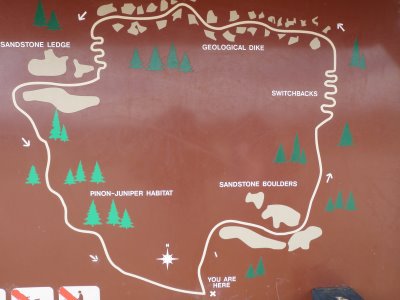
We are started our hike from the Lathrop State Park camp store because it has rest rooms and supplies for starting a fire at our Yucca Campground camp site. However, the following description of the trail is as if we started from the trail head and hiked counter-clockwise since the Hogback Nature trail is an interpretative loop with a corresponding brochure. The Hogback Trail is a 1.3 miles long with a gain in elevation of less than 100 feet; from 6,400 feet to 6,500 feet. The following is synopsis of the eight interpretative stations described in the free brochure.
The trail begins as a narrow dirt path on level ground. The first interpretative station describes the wildlife inhabiting the area including rabbits, red-tailed hawks, mule deer, raccoons, bobcats, and coyotes. In addition, Great Plains Yucca and Plains Prickly Pear Cactuscan be seen blooming near the trail in the summer time.
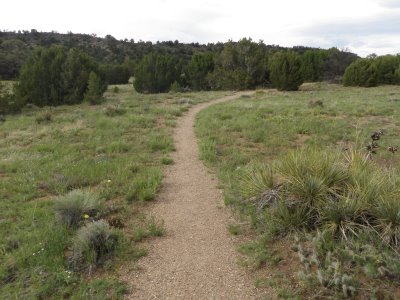
The second interpretative station points out the sandstone rocks near the trail. The sandstone rocks are remnants of an ancient beach from a 100 million years ago.
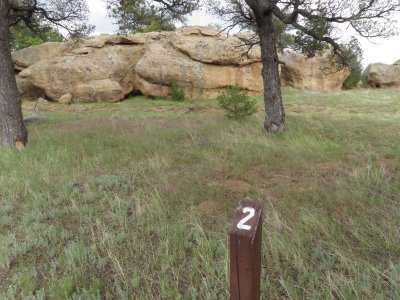
The third interpretative station identifies three native trees near the trail: Gamble Oak, Pinyon Pine, and One-seed Juniper.
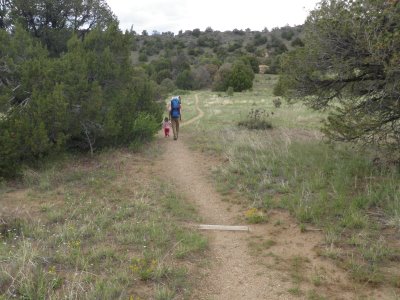
After the third station, the trail does a short climb up to the top of the hogback. The fourth station details the history of the nearby mountains including the Spanish Peaks seen in the following picture. West Spanish Peak is on the right and is 13,626 feet above sea level. The East Spanish Peak is on the left and is 12,683 feet above sea level. The Spanish Peaks are igneous rocks that have been exposed by weathering and erosion of sedimentary rocks that formerly sat atop of the igneous rocks. The weathering and erosion of the sedimentary rock has been intensified by a major uplift that the entire region experienced about 65 million years ago. Igneous rock is much more resistant to weathering and erosion than is sedimentary rock and, thus, there would be no Rocky Mountains without igneous rock because the areas with weaker sedimentary rock are now flat plains. Interestingly, the two Spanish Peaks are composed of different generations of igneous rocks with the East Spanish Peak being slightly younger.
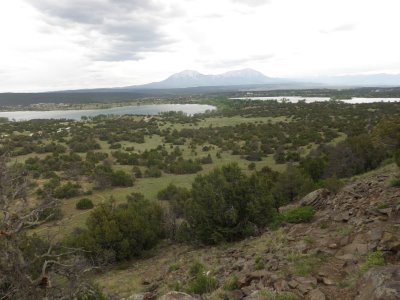
The trail runs along top of a hogback ridge and provides views to the north, west, and south.
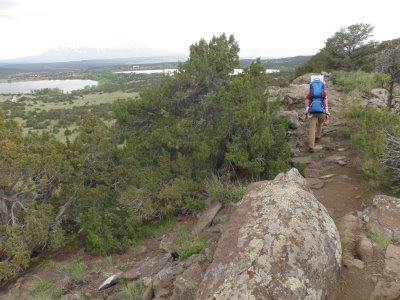
The fifth station describes the two reservoirs: Horseshoe Lake and Martin Lake; and activities that include fishing, boating, swimming, and wind surfing.
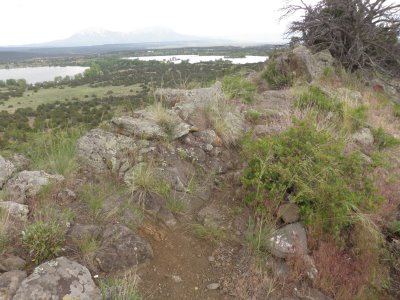
The sixth station reiterates the role igneous rock plays in the landscape and points out a 200+ year old Juniper clinging to the rock in the following picture.
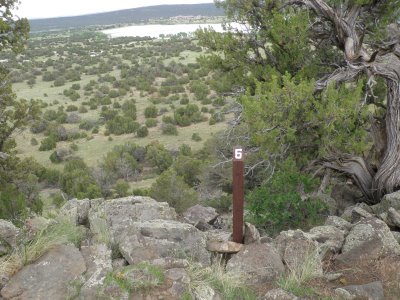
The seventh station illustrates the cultural significance of the Great Plains Yuccaseen at the bottom of the following picture.
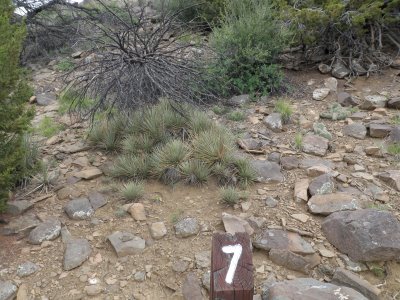
After the seventh station, the trail drops back down to level ground. The eighth station provokes hikers to test their new found knowledge on the remainder of the trail. The trail is ideal for kids but they made need some help on a few rocky climbs and descents.
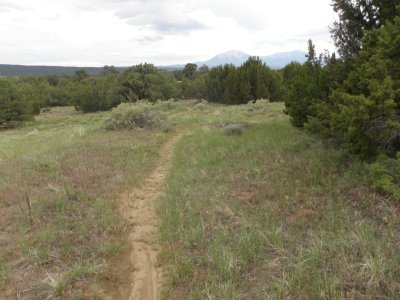
In sum, the Hogback Nature trail is an easy, informative, and surprisingly scenic hike that complements the other outdoor activities at Lathrop State Park.